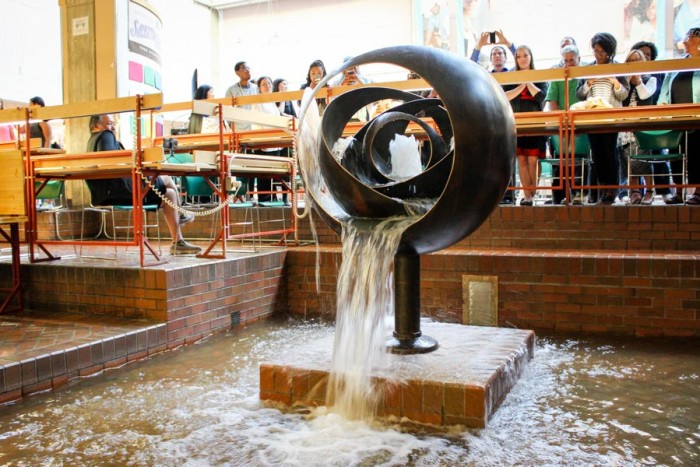
Recently, I attended the rededication event for “Fountain,” a fountain sculpture by the late Japanese American artist George Tsutakawa. The fountain is located in the heart of the Seattle Central College campus on Broadway.
For years, “Fountain” was a dirty old sculpture on the surface. But deep down lies the history of Japanese Americans and their struggle for justice. This photo series is a documentation of the people who has worked against all odds to fix the fountain — that had been left in a state of disrepair when the college decided to stop maintaining it in 2005— and they journey as they turned this abandoned historical piece of art into what it was back in its glory days in the 1970s.
When I came to Seattle Central three years ago at the age of 16, I wrote my first ever news article on this fountain sculpture for an English 101 assignment. Throughout the years as I wrote for various news publications, I went back again and again. When last fall I left the college for University of Washington Bothell, I was angry because the fountain was still not working. It seemed like I had an unfinished business with it.
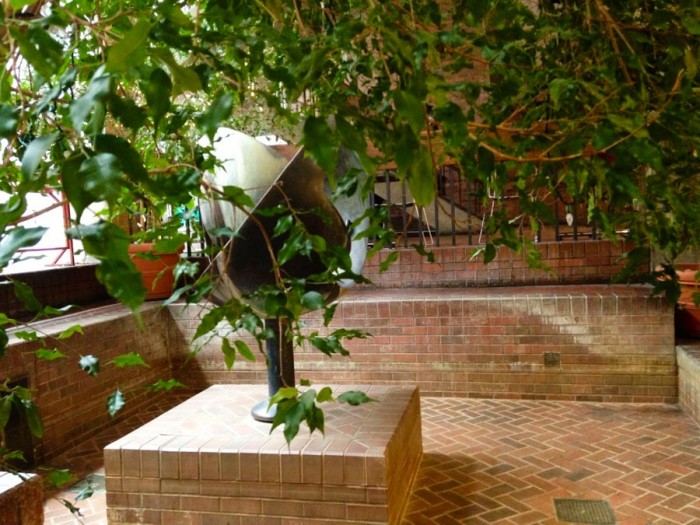
At the recent rededication ceremony, while taking pictures for The Seattle Globalist, I shed a tear. This was the closure I had always wanted. I finally heard the flow of the water on the fountain. I felt at peace.
The Fountain Committee comprises mostly Asian American faculty and staff at the college. In 2012, there was a rumor the college administrators were thinking of selling the fountain that had been inactive for a decade. This dedicated group got together to fight. I joined the group about a year later.
For the last five years, the group has done multiple fundraisers and campaigned for the refurbishment of this historical fountain with the help of students and facilities staff at Seattle Central and supporters in the arts and the Asian American community. Buckets of blood, sweat and tears later, today we finally reached the finish line.
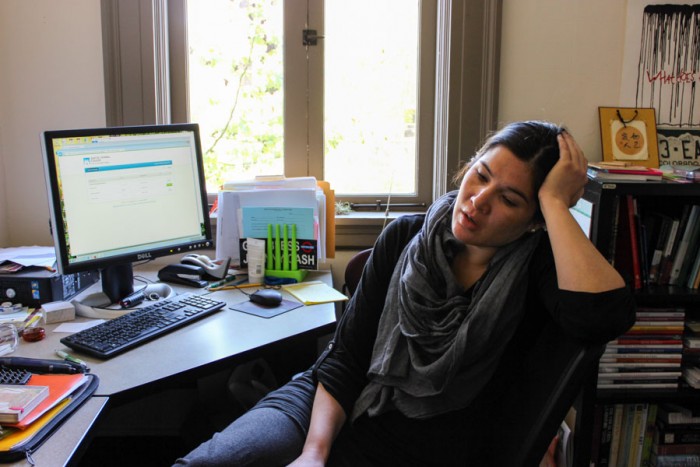
Melanie King, an art history professor at the college, makes it a point to educate students in her art classes about “Fountain” and its importance.
“I think the reason why the fountain has been such a remarkable project was because it’s gotten a lot of people thinking about a lot different issues, thinking about the politics of art, history and racism — all these different layers are so wrapped up in this one piece. As a teacher it’s been a great teachable moment.”
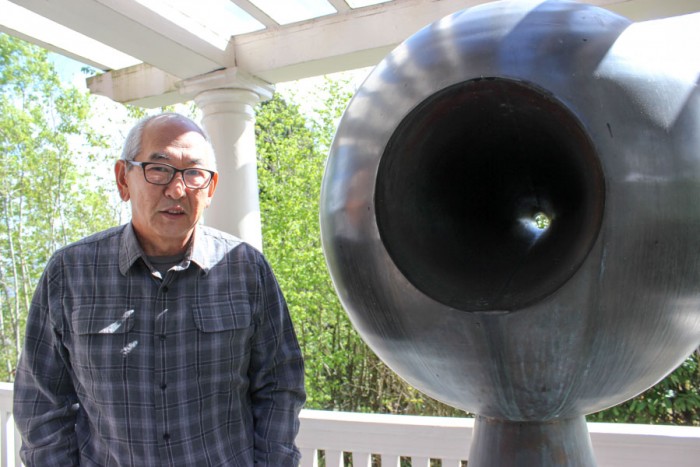
Gerry Tsutakawa, George Tsutakawa’s son, helped his father installed “Fountain” in the main building of Seattle Central. The college is located on the site of Broadway High School, where many Japanese Americans in Seattle went to school before they were sent to internment camps in World War II.
“[‘Fountain’] has been inactive for so long, it’s kinda gathering dust and covered with oxidation so when the [committee] started to raise funds for restoration, it’s quite a bit of work. I’m a small part of this whole effort. I was asked to be an adviser and a connection between my dad and the fountain. But I redid the rough surface with my small crew and it took a couple of days. Did you see it after? Looks a lot better, huh? It felt really good to go in there and remove it all — the graffiti, little scratches,” Gerry said.
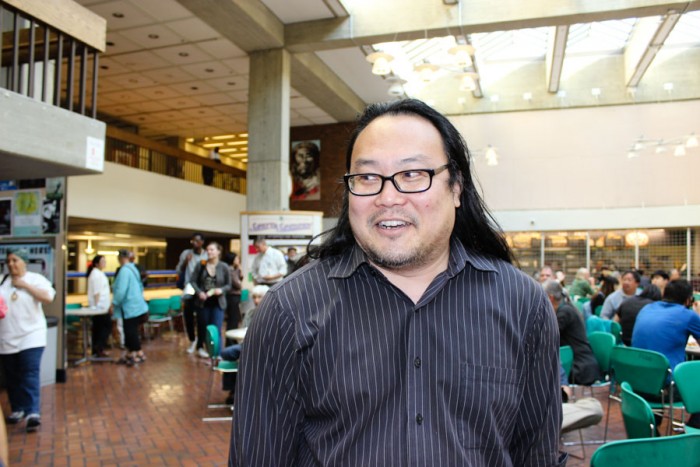
Ken Matsudaira, curator of M. Rosetta Hunter Art Gallery at Seattle Central, works with the college’s facilities crew, making sure the pumping below the fountain works perfectly. Preserving the fountain was one way to save a Japanese American space, or nihonmachi, he said.
“The fountain is tied with the history of the space and the context of nihonmachi and disappeared populations because of the War. Consciously or subconsciously I’m very aware of the diffusion or decentering of Japanese American spaces. There’s no such a thing as nihonmachi anymore in Seattle. I would argue that Japanese American spaces now, they exist, but these are the spaces we go to now rather than spaces where we live. For me having the fountain disappear [would be] another symptom of this lost of nikkei communities. Even if the average viewers don’t understand that when they’re looking at the fountain, there are those who do get it.”
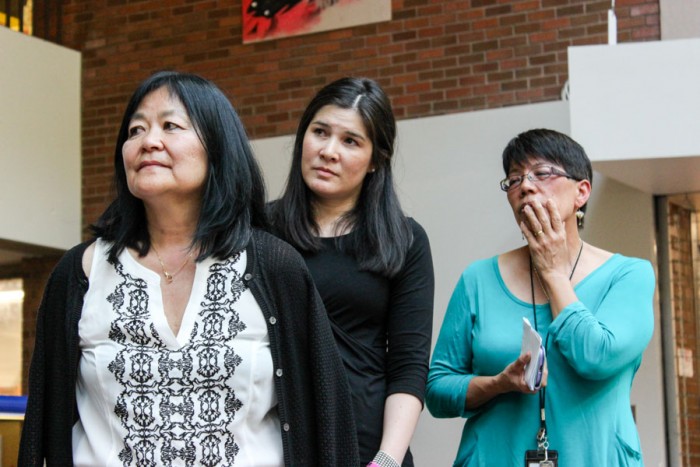
Deborah Uno has a deep relationship with the Tsutakawa family and is central in making sure the committee and the family work together in this effort.
“I think my biggest disappointment was that I didn’t feel like we ever had the support of the college because really it’s their responsibility, once they accepted it, to maintain it. And that didn’t happen. There’s money to maintain a piece like this, they just chose to do other things with that money. That’s what I’ve been told by project managers at other schools,” Deborah said.
“My grandparents, parents, and two older sisters were incarcerated but I didn’t know anything about that until I was 12 years old because my parents had never talked to me about that. I think it was the shame, or that they didn’t want me to be mad at anybody.”
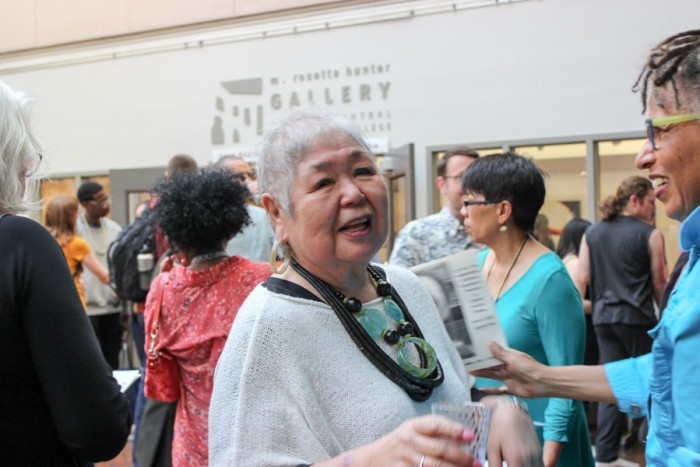
Bea Kiyohara was an administrator at Seattle Central and one of the pioneers at the Asian American Theater movement in the 1970s. Bea helped the committee raise funds through her relationship with local arts community.
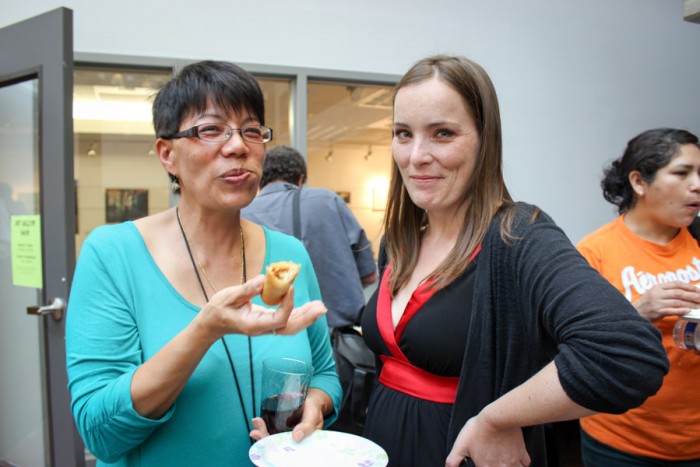
Tina Young, director of Multicultural Services, is the spearhead for the project. Year after year, she makes sure the committee is on top of everything.
“This is community,” Tina said as she spoke about the five-year journey in her opening speech at the event.
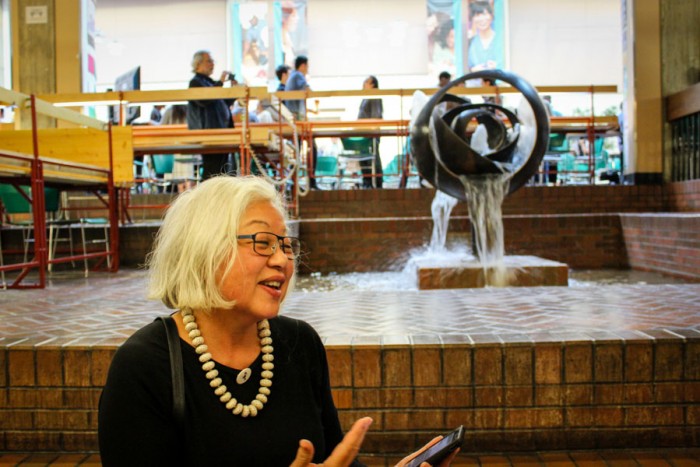
Mayumi Tsutakawa, daughter of George Tsutakawa, posted a picture of her father’s fountain on Instagram for her children who live out of state to see.
“Fountain” is back to life at last.


Wow, I love Tsutakawa’s work, his heritage and all that his works stand for. Thank you so much for restoring this fountain and again bringing to life all of the joy that it means to those who see it.